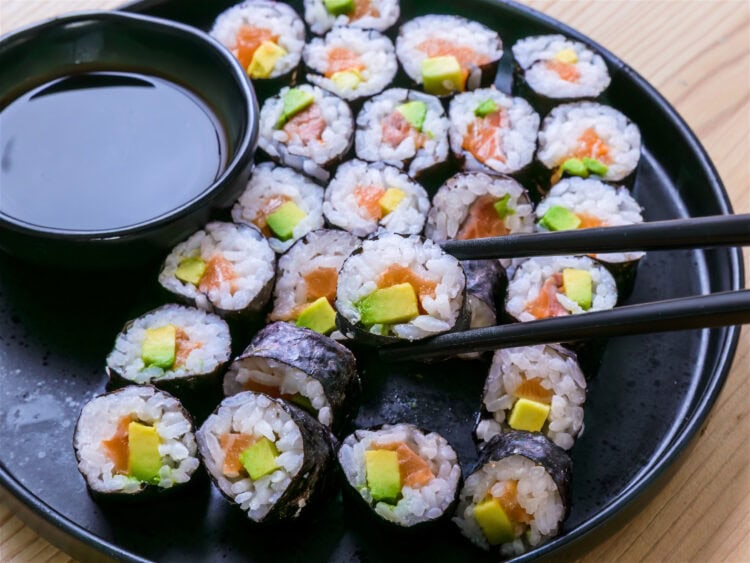The foolproof way to make maki sushi at home—endless sushi nights for less
Hello, dear readers. For a long time, the only related post on the site was my sushi rice recipe, and many of you asked for a dedicated article with step-by-step instructions on assembling sushi—maki, in this case. It’s a touch more involved than nigiri, but still well within everyone’s reach.
Well, it’s done! Today I’m sharing a recipe for making maki sushi in the comfort of your home, and I’ll try to answer the questions I’ve seen over the years in the community and in my emails.
What is maki sushi?
It might sound like a simple question. After all, everyone knows sushi. It’s not as if Japanese recipes only just arrived on our tables. Compare that with Korean cuisine, for example (think kimbap or the very spicy gochukimbap).
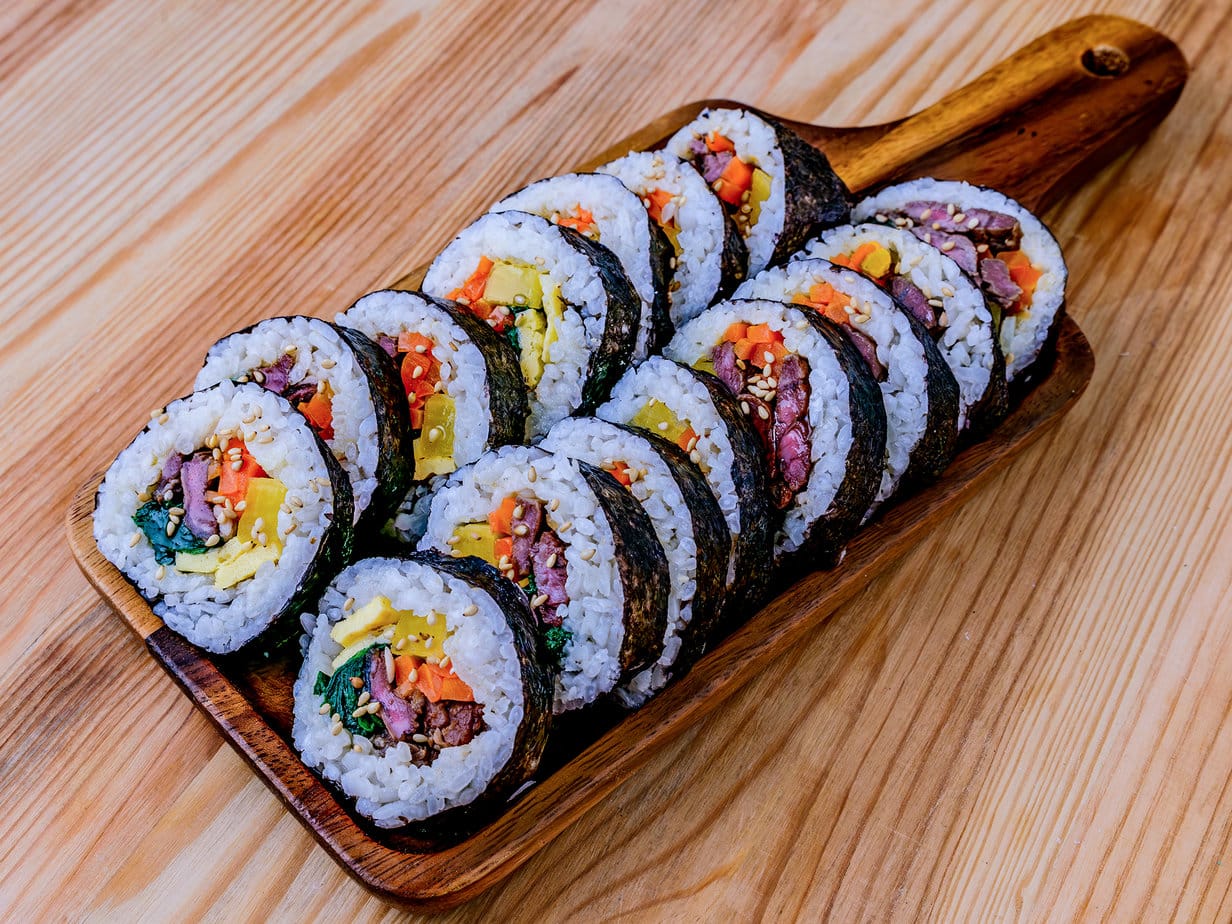
In Japan, nomenclature and categorization are serious business—just look at the rules that govern donburi. Sushi is no exception.
Sushi refers to any dish made with vinegared rice. This article focuses on maki sushi, or makizushi—rolled sushi in which the rice is wrapped in a sheet of nori seaweed.

Types of Maki Sushi
The site Just One Cookbook (an excellent reference for Japanese cooking) lists several types of maki, based on their diameter and fillings:
Hosomaki (細巻き): Thin rolls (about 2.5 cm in diameter) with nori on the outside, containing one ingredient.
Chumaki (中巻き): Medium rolls (2.5 to 4 cm in diameter) with nori on the outside, containing 2 to 3 ingredients.
Futomaki (太巻き): Thick rolls (5 to 6 cm in diameter) with nori on the outside, containing 4 to 5 ingredients.
Uramaki (裏巻き): Inside-out rolls with nori on the inside. This category includes the well-known California roll. A note to purists: please don’t claim California rolls aren’t sushi—the Japanese even have a dedicated name for them.
Temaki (手巻き): Cone-shaped sushi rolls (hand rolls), very simple to make. Perfect for sushi nights where everyone chooses their fillings and rolls on the spot.
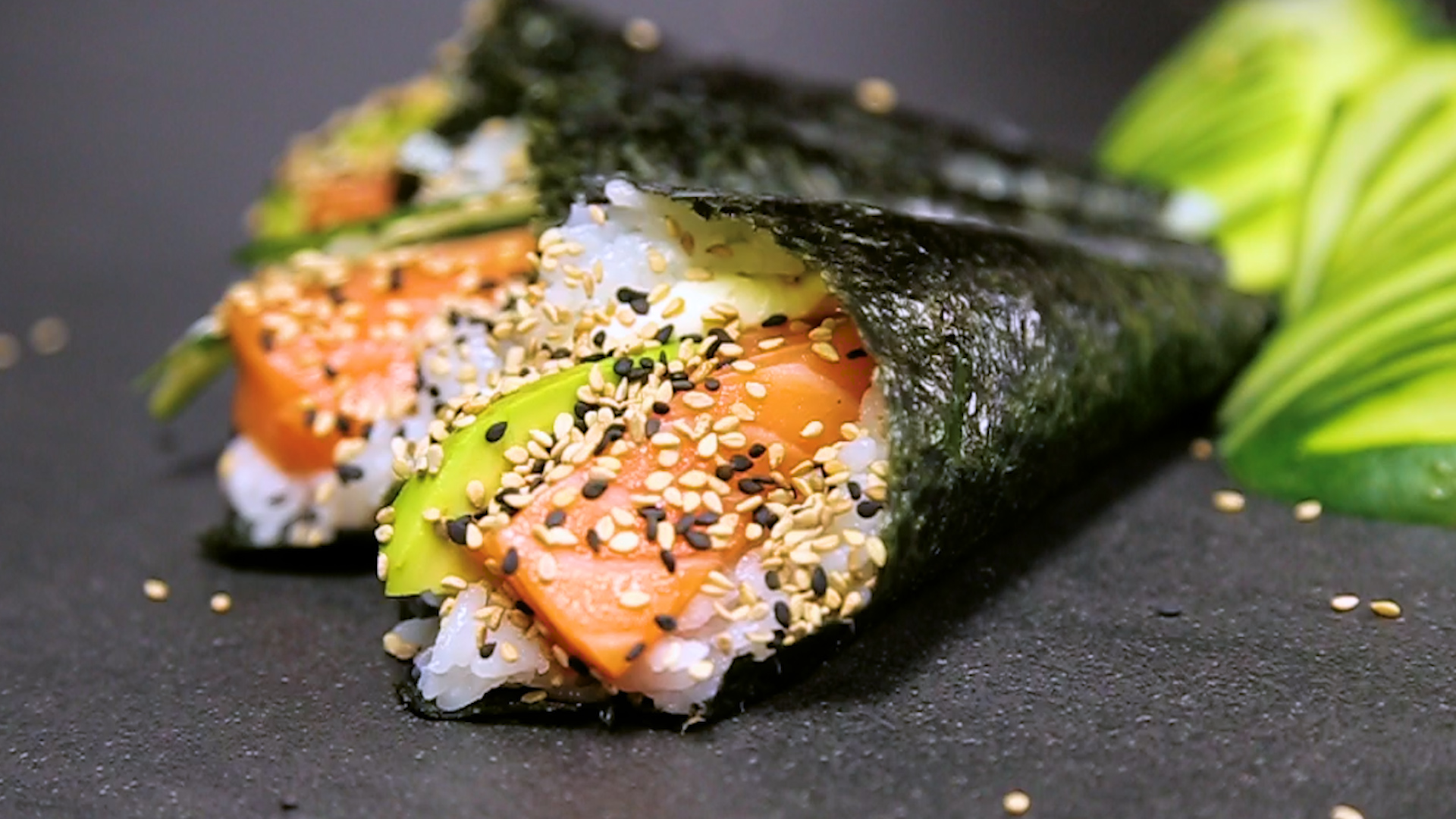
For our part, today we’re making maki that fall somewhere between hosomaki and chumaki.
What fish should you use for sushi?
The information presented here is for informational purposes only and does not replace professional advice. I am not a food safety expert and cannot be held responsible for any foodborne illness resulting from the consumption of raw or improperly stored foods. For questions or updates on food safety, please refer to official national and local sources.
The cold chain
It is imperative to strictly maintain the cold chain. After purchasing raw fish, put it in the fridge as quickly as possible. If you can, pack fresh and frozen items together to help keep everything cold on the trip from the store to home. If you make sushi with raw fish and they are not eaten at mealtime, you cannot keep them for the next day or another meal.
This is especially true because the rice is often slightly warm or just cool—not fully cold. That’s best for flavor, but it quickly raises the fish’s temperature and promotes bacterial growth. Once rolled, the clock starts. I don’t recommend rolling far in advance.
The raw fish is handled at room temperature while rolling and then sits out during the meal—still at room temperature. After that, do not keep and eat them hours later; you risk foodborne illness.
Parasites in raw fish
Wild fish can contain parasites such as Anisakis, which cause severe digestive disorders. These parasites are destroyed by cooking or freezing.
For raw consumption, wild fish must be frozen at -20°C for 24 hours or at -35°C for 15 hours. This treatment isn’t required for approved farmed fish or fish already treated for sashimi, but always perform a visual check.
Keep in mind that the risk with farmed fish bought at the supermarket is very low, but it does exist. If you eat it very often without freezing appropriately, it’s not a question of “if” but “when”.
To learn more:
- Official European source on food hygiene
- Official French government guidance on controlling parasitic risk in fish
The main ingredients of Maki Sushi
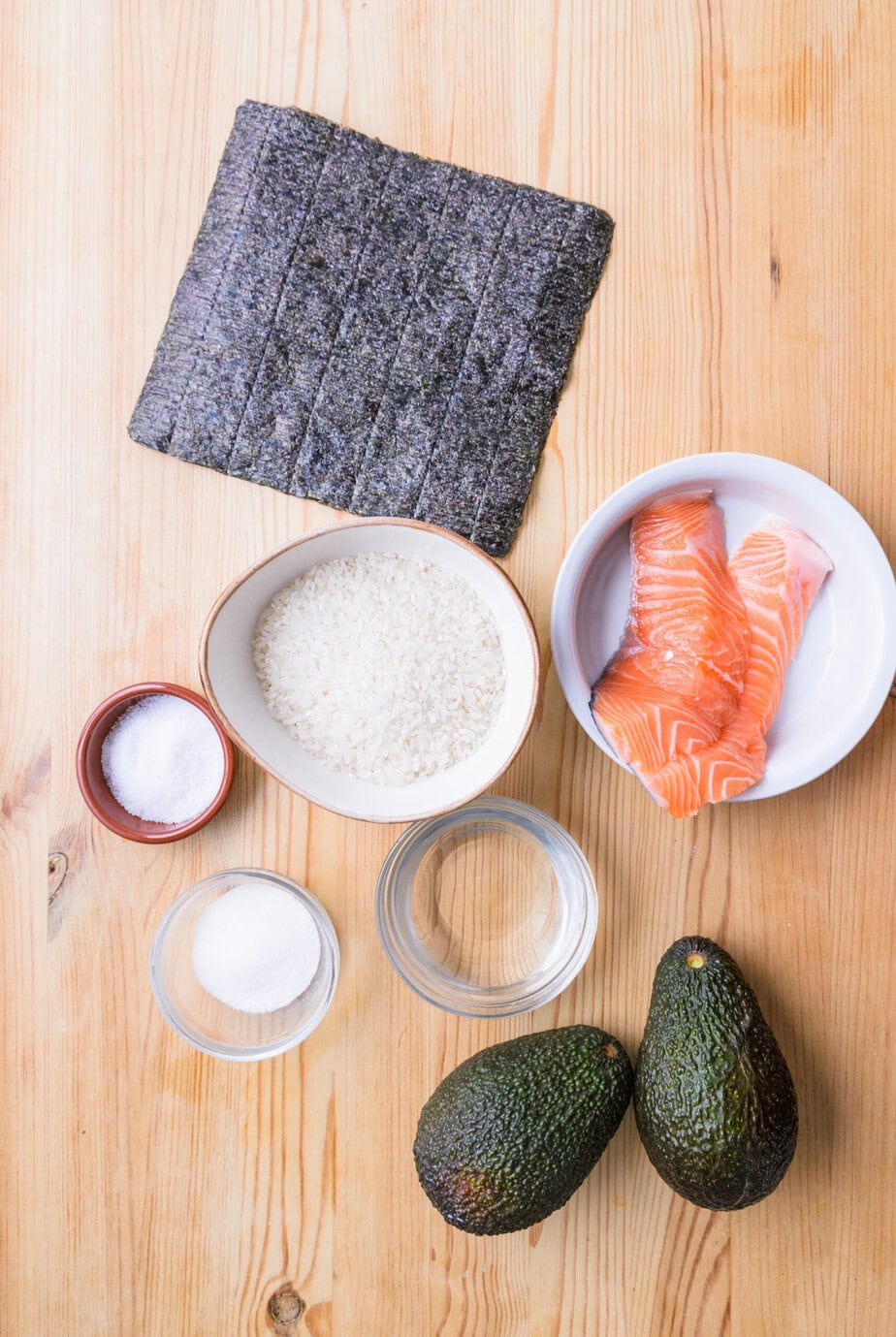
Rice: here, it’s essential—you’ll need japonica rice, commonly called “sushi rice.” Some people substitute bomba or arborio rice, but I’ve never tested it personally. If you do, feel free to drop me a quick email. These days you can find bags of sushi rice in most supermarkets.
Rice vinegar: adds a lovely acidic lift to the seasoning. Ideally use a Japanese brand, as acidity levels can vary depending on the vinegar’s origin. That said, use what you can find.
Salmon: Use salmon or any other fish you enjoy (tuna, for example).
Nori sheets: Japanese dried seaweed sheets, essential for a traditional maki roll.
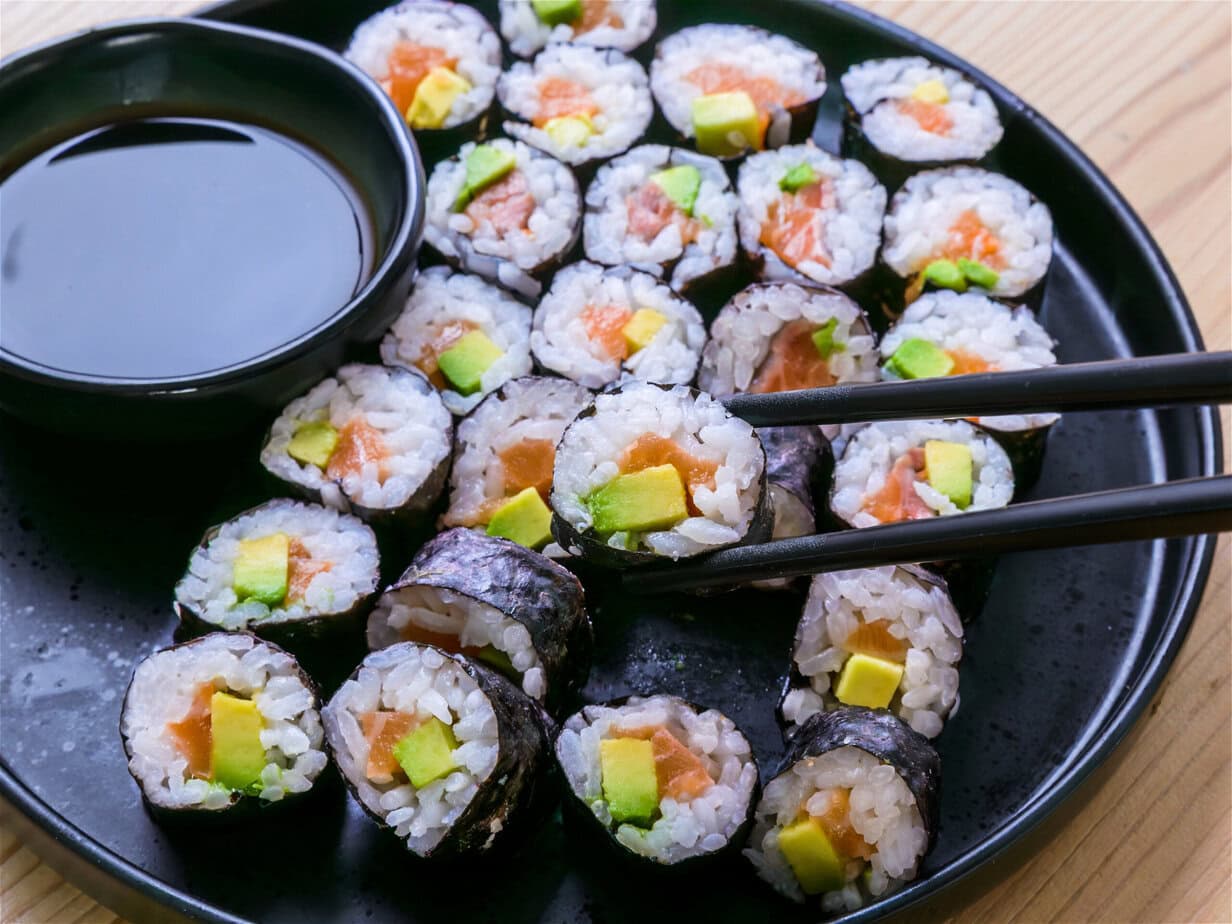
Equipment
Ingredients
For the maki
- sushi rice cooked, seasoned, and cooled to slightly warm or cool
- 6 sheets nori
- 150 g fresh salmon
- 2 avocados
Sushi rice seasoning
- 152 g rice vinegar
- 6 tablespoons sugar
- 3 teaspoons salt
Cooking the rice
- 300 ml water
- 250 g sushi rice dry weight
Instructions
Cook the rice
- Even better: use a rice cooker. When it's done, open, fluff, then let sit 10 minutes with the lid on.
- Rinse the rice 4-5 times, until the water runs almost clear.250 g sushi rice
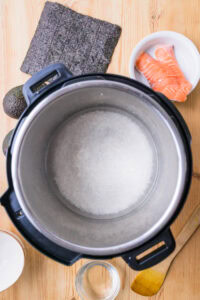
- Drain and let sit in a colander for 1 hour to dry.
- Combine the water and rice in a small saucepan. Cook over high heat for 2 minutes.300 ml water
- Reduce the heat to the lowest setting, cover, and cook for 10 minutes. Watch the last few minutes closely to avoid scorching.
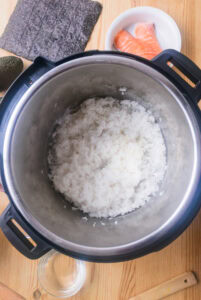
- Turn off the heat and replace the lid with a clean kitchen towel. Let stand for 15 minutes.
Make the seasoning
- Combine the vinegar, sugar, and salt in a saucepan and bring to a boil.152 g rice vinegar, 6 tablespoons sugar, 3 teaspoons salt
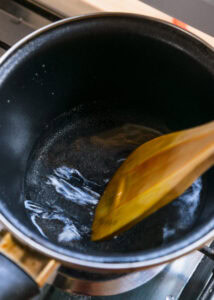
- Once dissolved, let cool.
- Stir into the hot rice little by little, tasting as you go, and stop when the seasoning tastes right to you.
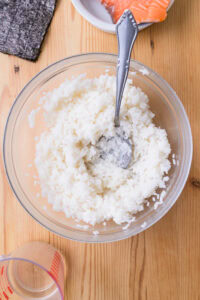
Quickly get the sushi rice ready to use
- Spread the seasoned rice on a large plate and refrigerate.
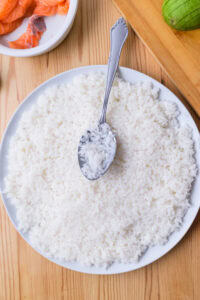
- After 10 minutes, turn the rice over and chill for another 10 minutes.
- Repeat until the rice is lukewarm to cold. Shape your sushi.
Prep
- Cut the nori sheets (dried seaweed) in half lengthwise.6 sheets nori
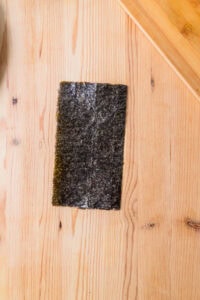
- Slice the salmon and avocado into long strips.150 g fresh salmon, 2 avocados
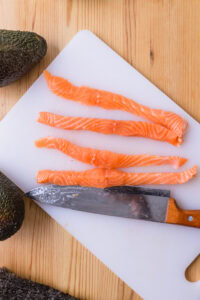
Shape the maki rolls
- Place a sheet of nori on your bamboo mat, shiny side down.
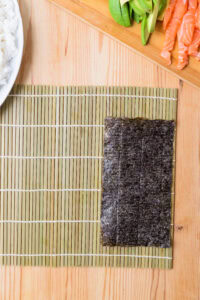
- Spread the cooked rice evenly on top, leaving about 2.5 cm uncovered on one long edge of the nori. If it sticks, wet your fingers.sushi rice
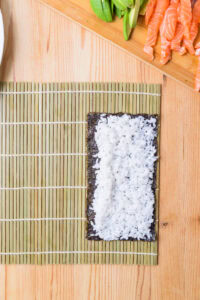
- Place a strip of salmon and avocado across the center of the rice. Hold the filling in place with your fingers.
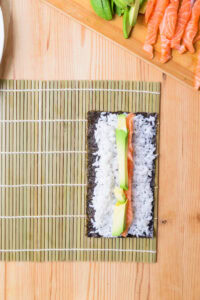
- Using your thumbs, lift the bottom edge of the bamboo mat and, in one quick motion, roll the nori and rice over the filling, stopping at the top edge of the rice (leaving the 2.5 cm strip of nori visible).
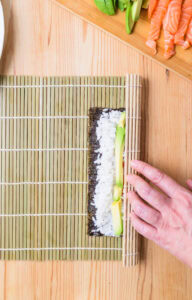
- Without removing the mat, gently press to tighten the roll and shape it into a square or round log.
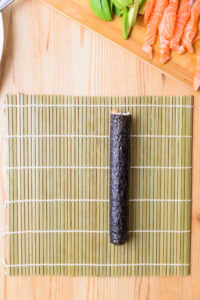
- Lift the mat and give the roll one more turn to seal the top edge of the nori (lightly moisten if needed).
- Using a very sharp, slightly moistened knife, slice each roll into even pieces about 2 to 3 cm thick.
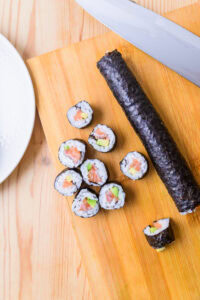
Video
Notes
Nutrition
Source: Justonecookbook
